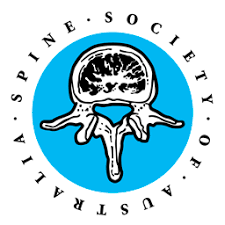About Back Pain
What is Back Pain?
Back pain or backache is the pain felt in the back that may originate from muscles, nerves, bones, joints or other structures in the spine. Back pain is one of the most common medical problems experienced by most people at some time. Back pain can be acute, usually lasting from a few days to a few weeks or chronic, lasting more than three months.
Back pain can occur as dull, constant, or sudden, sharp pain. Back pain may be confined to one area or radiate to other areas such as the arm and hand, the upper back, or the lower back and might radiate into the leg or foot. Other than pain, you may have weakness, numbness or tingling in your arms or legs caused by damage to the spinal cord.
How Does Back Pain Impact Your Health and Function?
Back pain can have significant impacts on your health and overall function. In the short term, it can cause discomfort and distress and interfere with daily activities such as work, exercise, and routine tasks. In some cases, it can even lead to difficulty walking or moving.
Over time, if not managed effectively, chronic back pain can lead to reduced physical fitness and mobility, as a person might avoid activities that exacerbate their pain. This can lead to weight gain, decreased muscle tone, and related health issues.
Chronic back pain can also affect mental health, contributing to problems like sleep disturbances, depression, and anxiety. It can also impact your social life, as constant pain might make engaging in social activities or family responsibilities difficult. In more severe cases, back pain can even lead to disability.
Who is Most at Risk for Back Pain?
Back pain can affect people of all ages, but the risk increases as people grow older due to age-related degenerative changes in the spine. Other factors that might increase your risk for back pain include:
- Physical fitness level: People who are not physically fit are more likely to experience back pain as weak back and abdominal muscles may not properly support the spine.
- Occupational hazards: Jobs that require heavy lifting, pushing, or pulling, and twisting of the spine can lead to back injury. A job that requires sitting all day can also lead to back pain.
- Genetic factors: Some causes of back pain, such as certain types of arthritis and cancer, have genetic components.
- Body weight: Being overweight or obese can put extra stress on the back, increasing the risk of back pain.
- Smoking: It can cause the body to deliver fewer nutrients to the discs in the back, leading to back pain.
- Mental health issues: Anxiety and depression can contribute to and arise from chronic back pain.
What are the Causes of Back Pain?
Back pain can be a complex condition with many potential causes, including:
- Muscle or ligament strain: Repeated heavy lifting or sudden awkward movements can strain back muscles and spinal ligaments, leading to pain.
- Bulging or ruptured discs: Discs are cushions between your spine's bones (vertebrae). The soft material inside a disk can bulge or rupture and press on a nerve, causing back pain.
- Arthritis: Osteoarthritis can affect the lower back. In some cases, arthritis in the spine can lead to a narrowing of the space around the spinal cord, a condition called spinal stenosis.
- Skeletal irregularities: A condition where your spine curves to the side (scoliosis) can lead to back pain, but generally not until middle age.
- Osteoporosis: Your spine's vertebrae can develop fractures if your bones become porous and brittle.
- Other conditions: Some types of cancer and infections can cause back pain.
What are the Symptoms of Back Pain?
Back pain symptoms can vary depending on the cause of the pain and the specific area of the back that's affected. Common symptoms might include:
- Persistent ache or stiffness anywhere along the spine, from the base of the neck to the tailbone.
- A sharp, localised pain in the neck, upper back, or lower back, particularly after lifting heavy objects or engaging in other strenuous activity.
- Chronic ache in the middle or lower back, especially after sitting or standing for extended periods.
- Back pain radiates from the low back to the buttock, down the back of the thigh, and into the calf and toes.
- Inability to stand straight without having pain or muscle spasms in the lower back.
Back pain can sometimes be a sign of a serious medical problem, like an infection or a spinal injury. Seek immediate medical attention if you experience back pain, loss of bladder or bowel control, numbness in the groyne area, leg weakness, fever, or unexplained weight loss.
What are the Types of Back Pain?
Back pain can be broadly categorised into two types:
- Acute Back Pain: Back pain lasts less than three to six months. It is most commonly caused by a sudden injury to the muscles and ligaments supporting the back. The pain may be constant or intermittent, quick or slow, accompanied by muscle spasms or stiffness.
- Chronic Back Pain persists for 12 weeks or longer, even after an initial injury or underlying cause of acute low back pain has been treated. Chronic back pain can be caused by various factors, including degenerative conditions like osteoarthritis, which often significantly impact a person's quality of life.
How is Back Pain Diagnosed?
Back pain diagnosis typically starts with a medical history and physical examination. Your doctor will ask about your pain's characteristics, associated symptoms, and pre-existing medical conditions.
In some cases, imaging tests may be ordered, such as an X-ray to look for bone abnormalities, a Magnetic Resonance Imaging (MRI) or Computerised Tomography (CT) scan to look for problems with the discs or nerves, or bone scans if your doctor suspects a bone-related problem.
In rare cases, nerve studies (such as electromyography) may be used to identify nerve damage that may be causing back pain.
How Can Back Pain be Treated?
Treatment for back pain is usually non-surgical and includes:
- Anti-inflammatory medications, or NSAIDs, are recommended to provide relief from pain
- Cold packs, heat packs or both are applied to the back to help ease much of the discomfort and relieve stiffness and pain.
- Sleeping with the pillow between the knees while lying on one side or placing the pillow under your knees when lying on your back may help relieve back pain.
- Exercises to strengthen your trunk and back muscles
These measures help relieve your back pain. However, the pain may not be resolved in certain conditions and may require surgical treatment. Your physician will decide on the appropriate surgery based on several factors.
What if Back Pain is Untreated?
If left untreated, acute back pain might resolve independently but can also progress to chronic back pain. Chronic back pain can lead to decreased mobility, loss of function, and reduced quality of life.
Untreated back pain can also have psychological effects like depression and anxiety. It can also affect a person's ability to work and engage in social activities.
In some cases, untreated back pain can be a sign of a serious underlying medical condition that can worsen over time if not addressed. As such, seeking medical attention for persistent back pain is always important.



